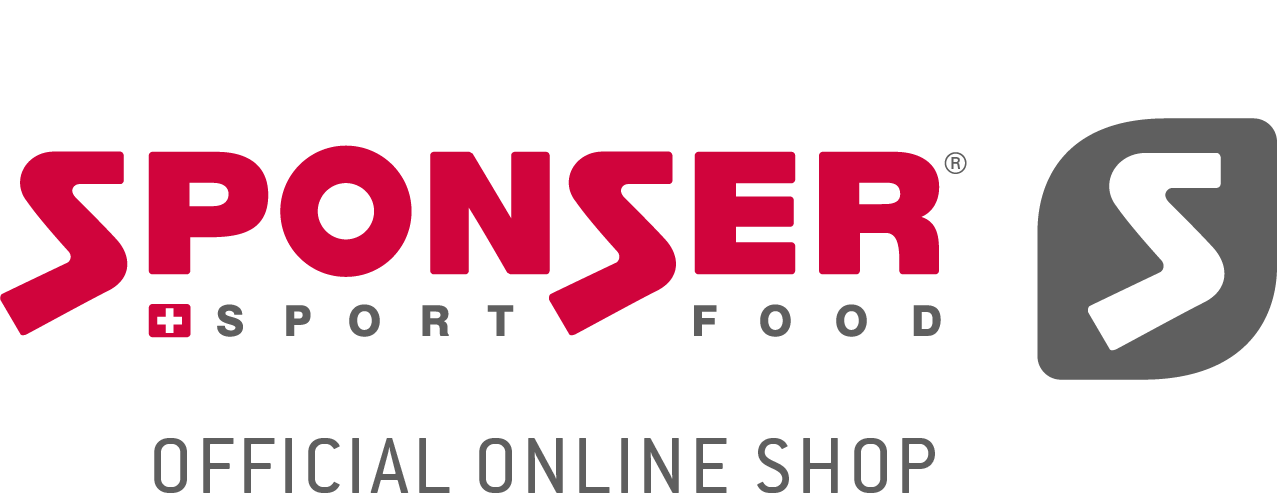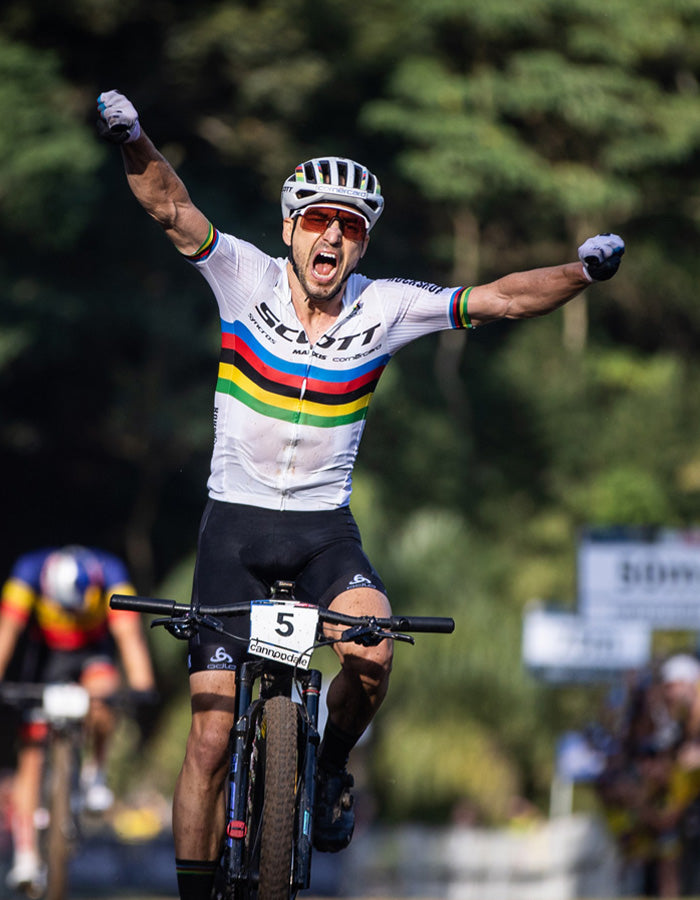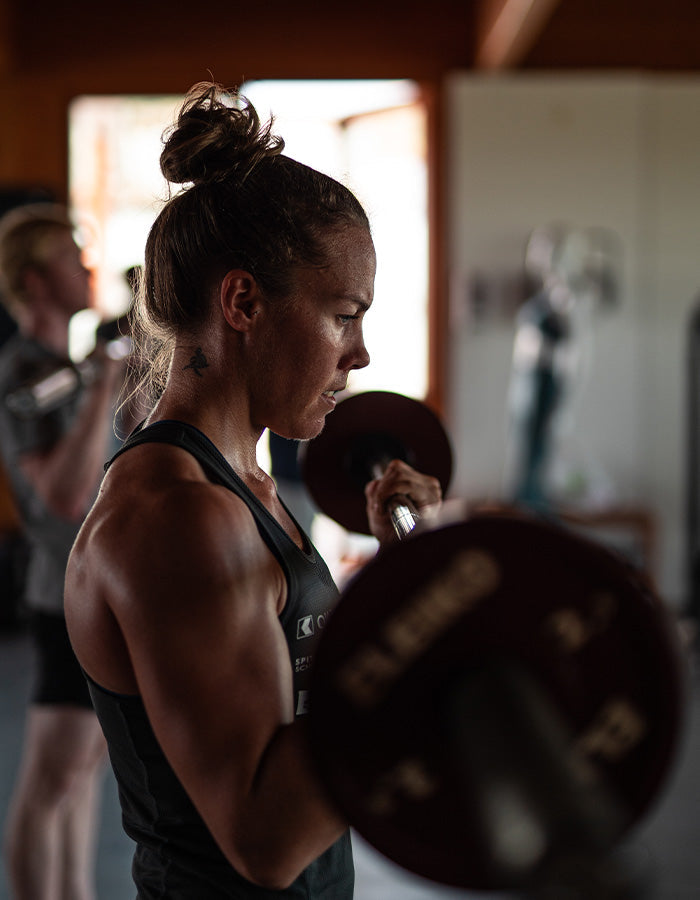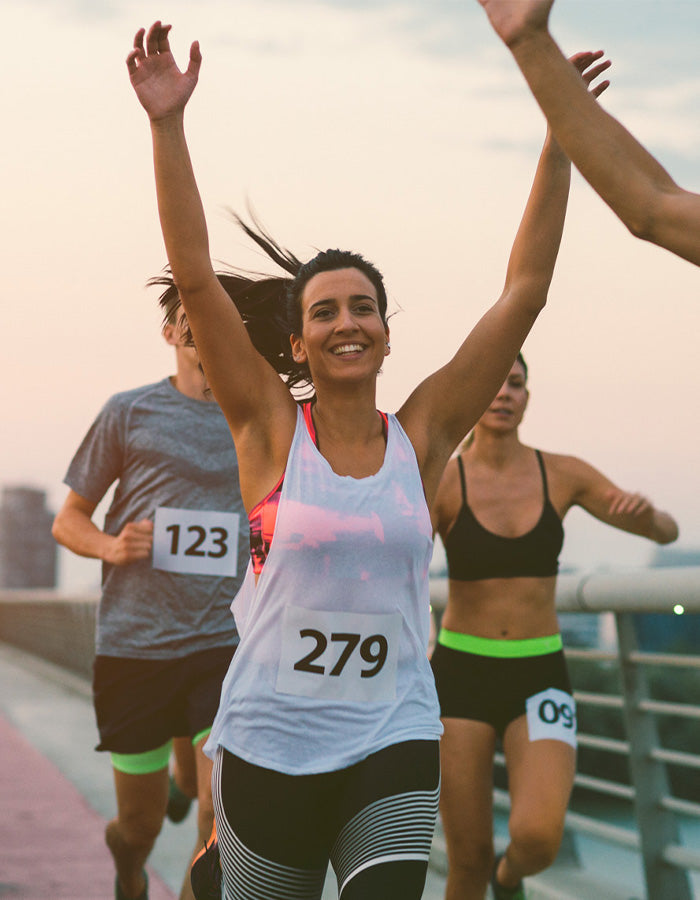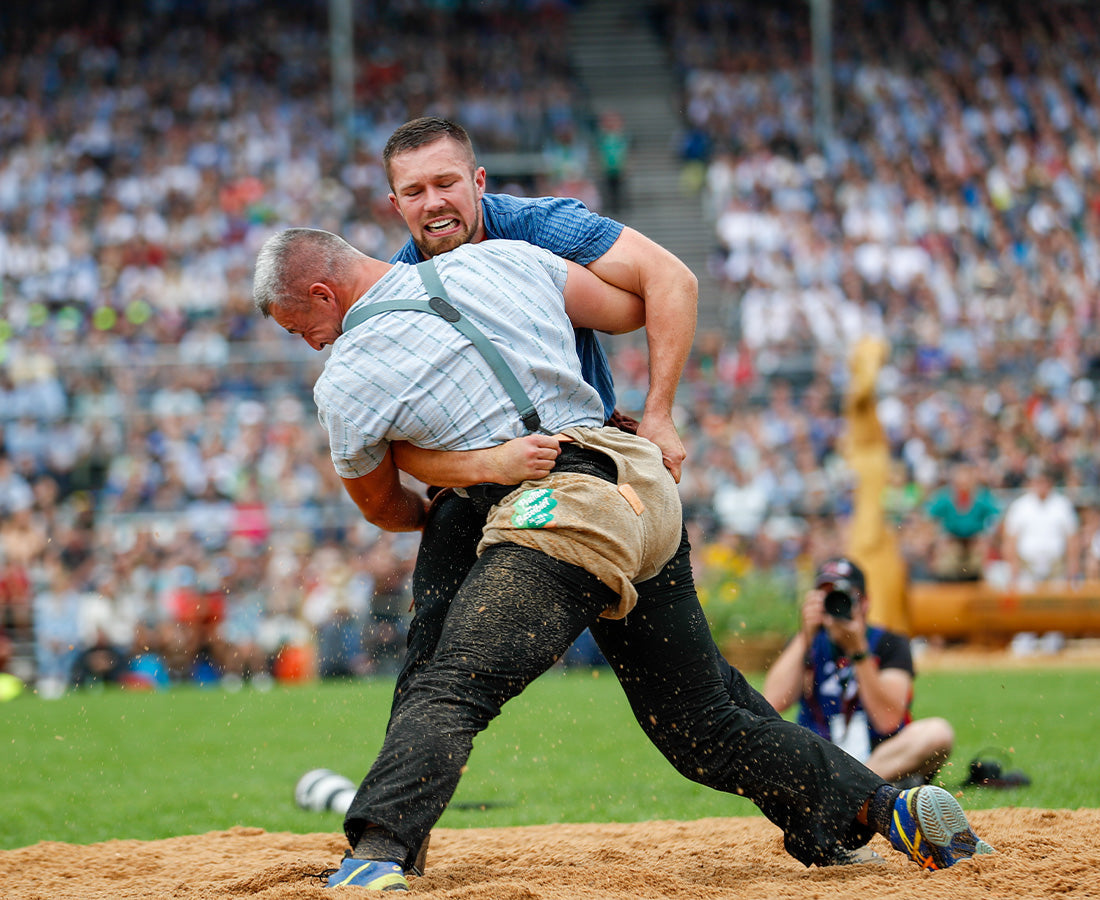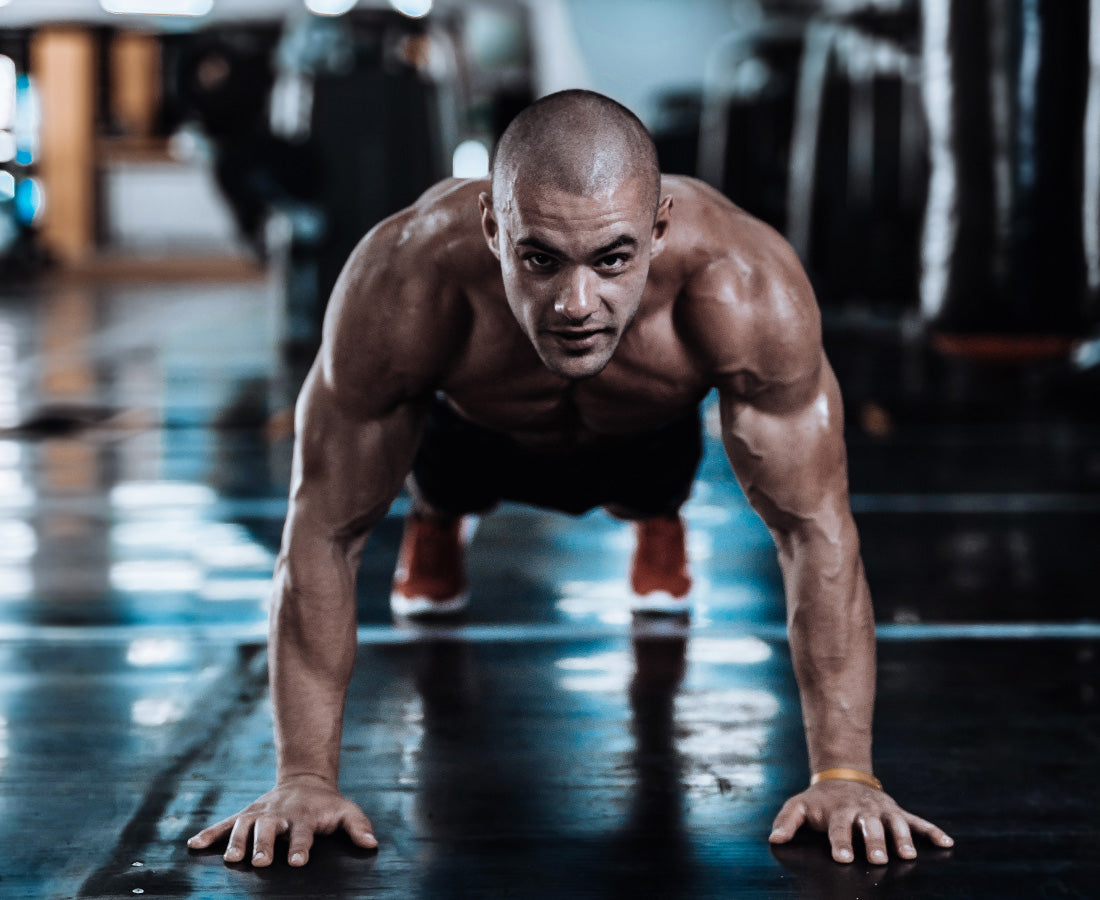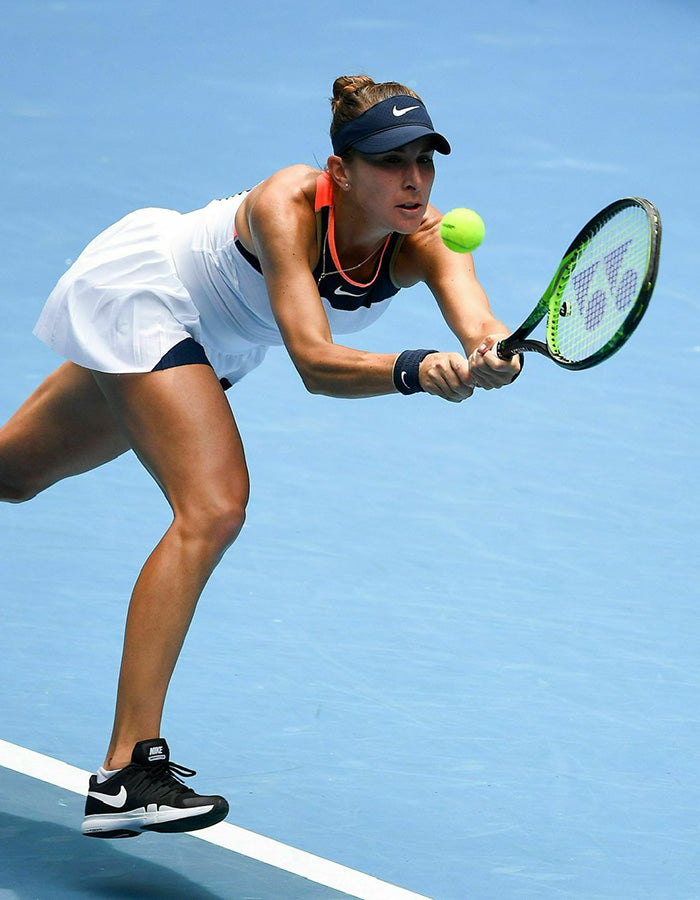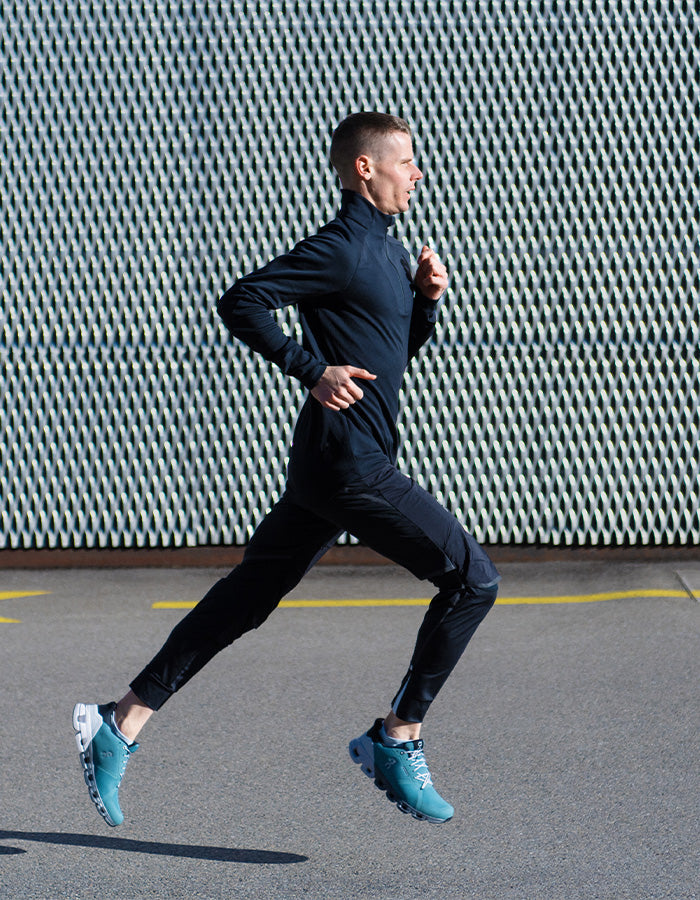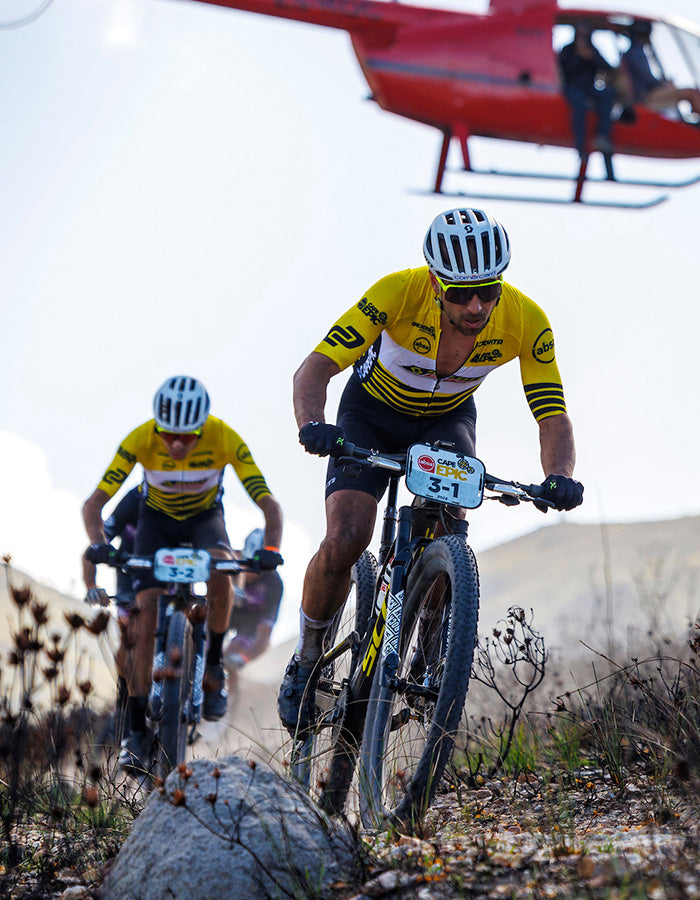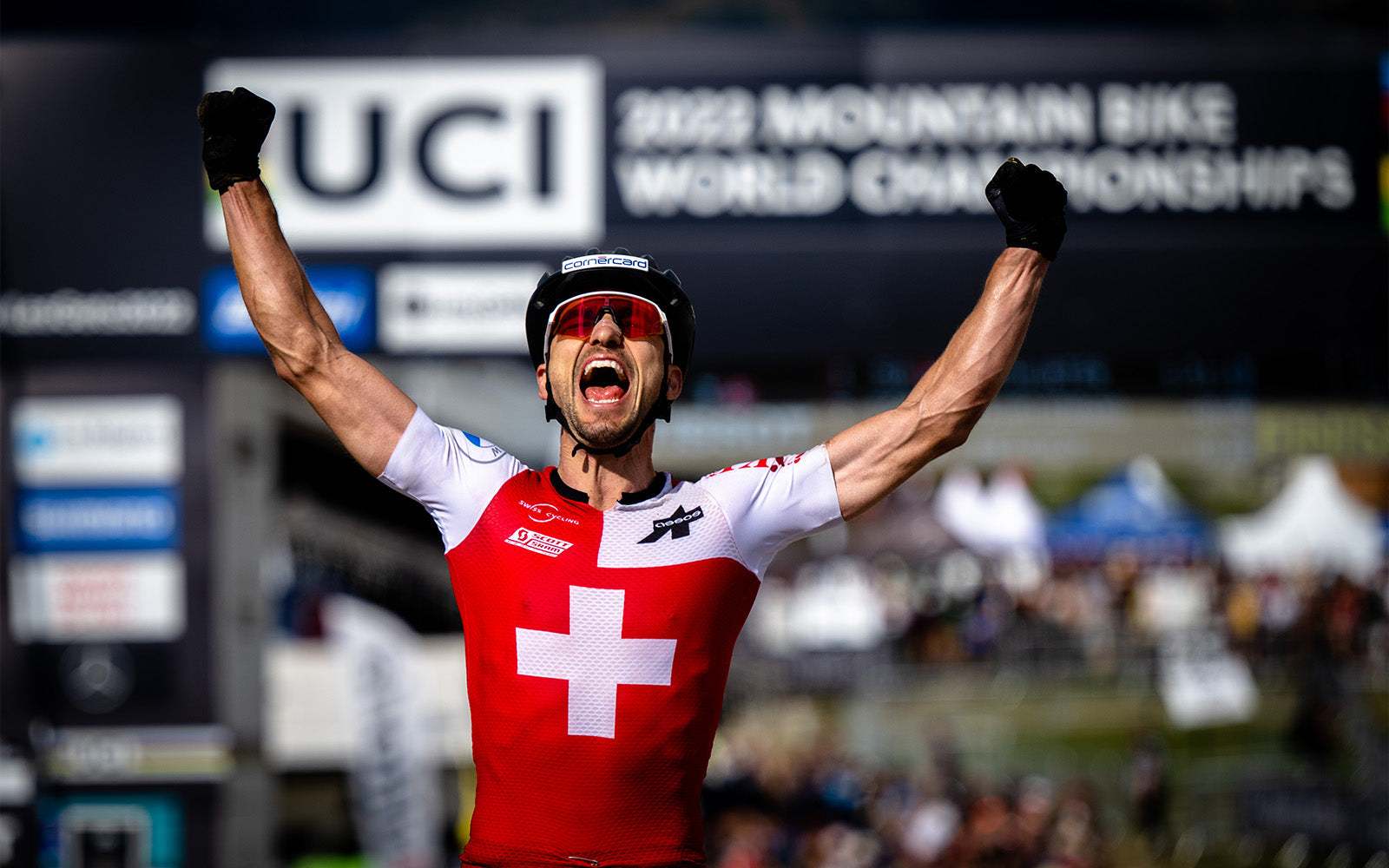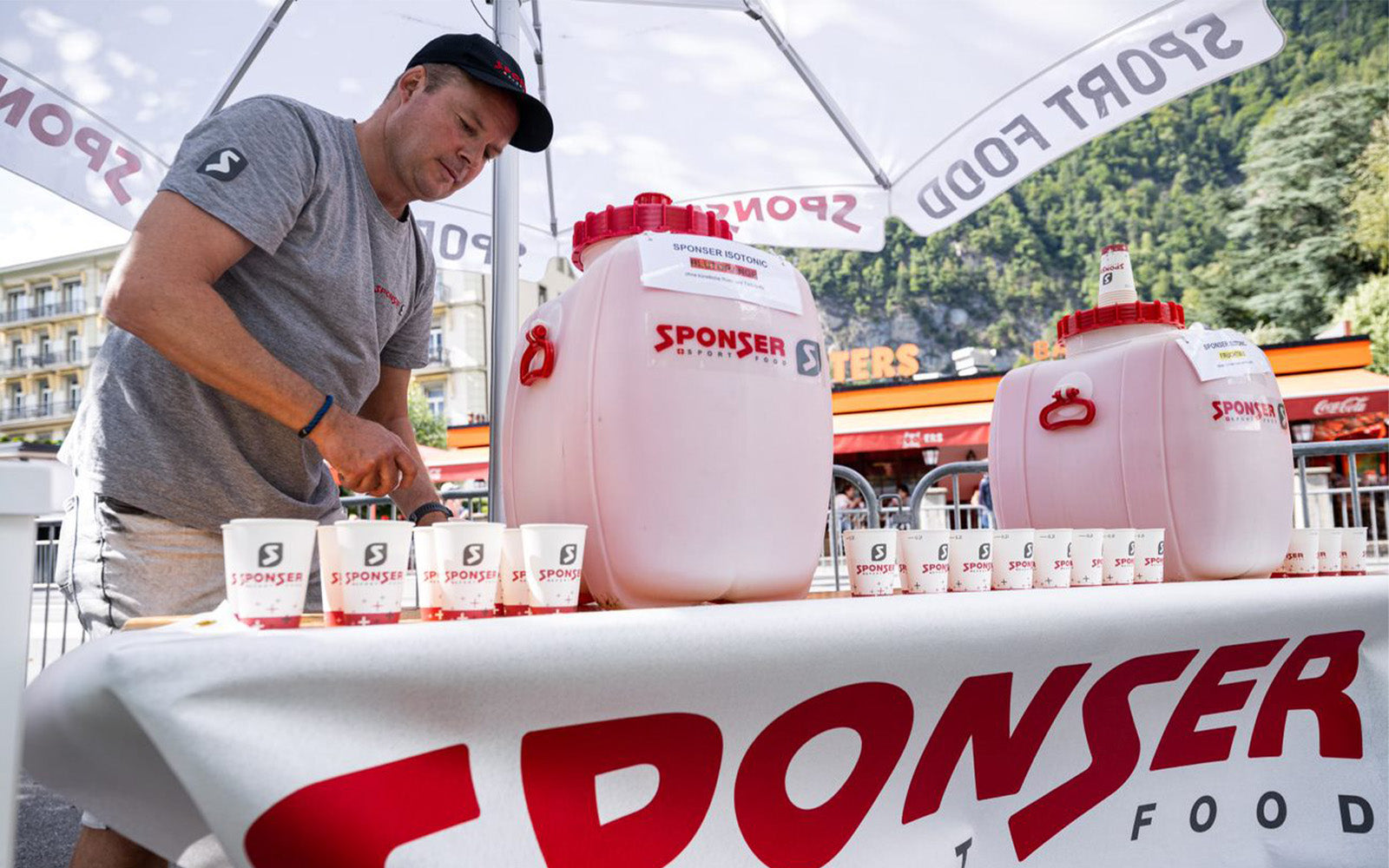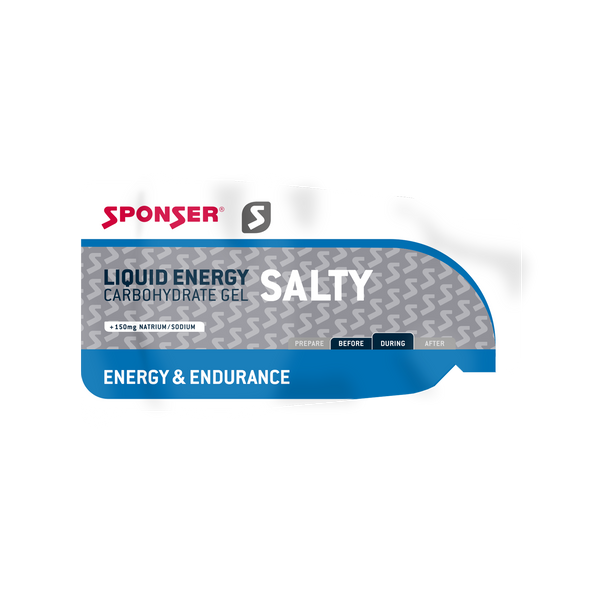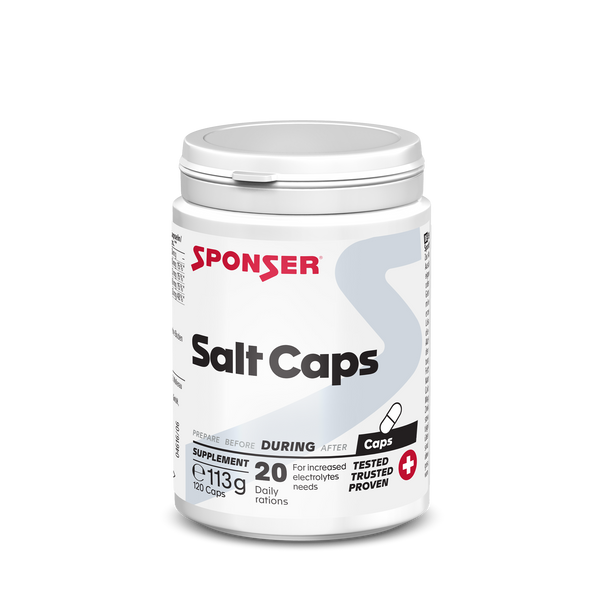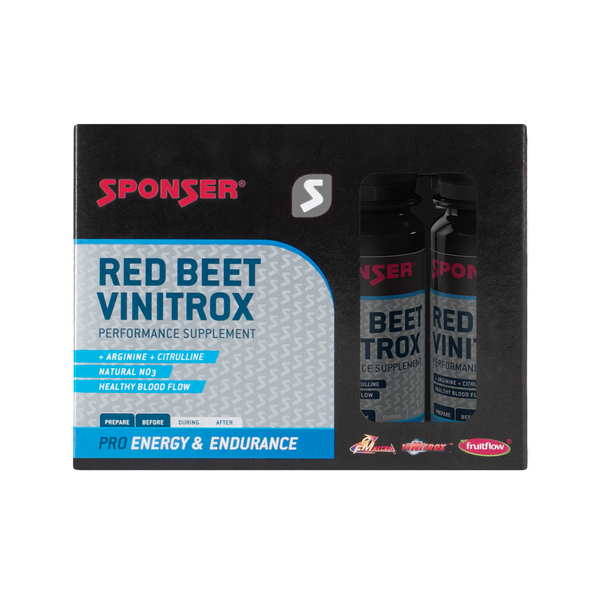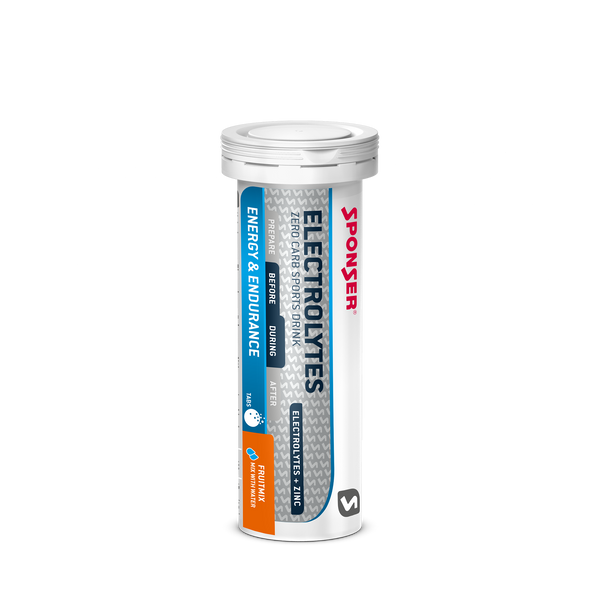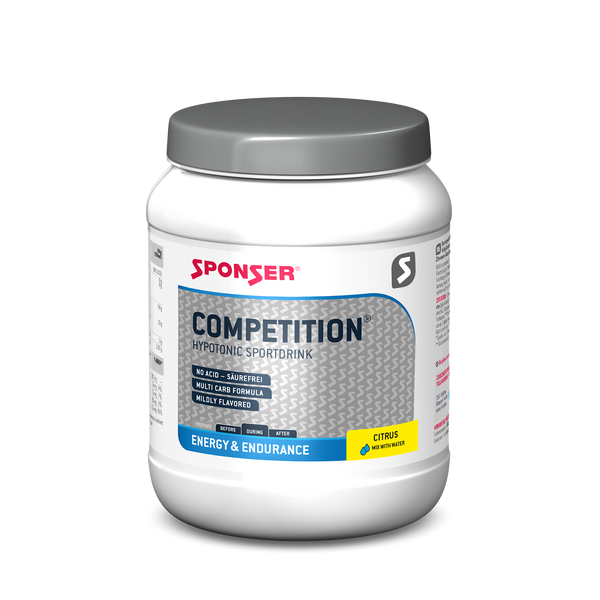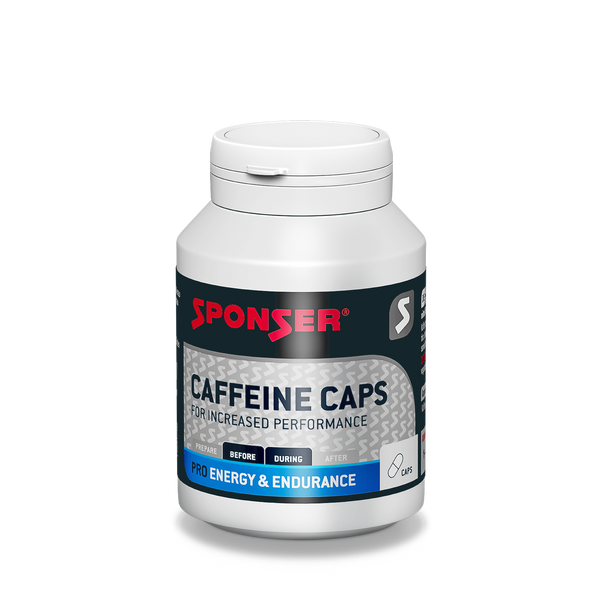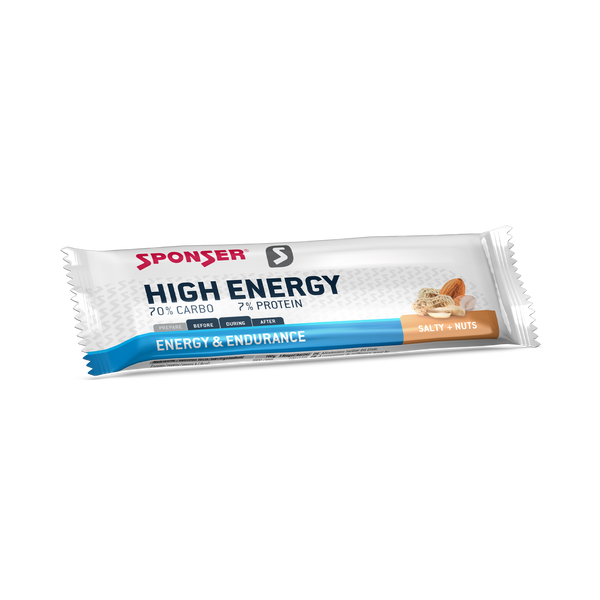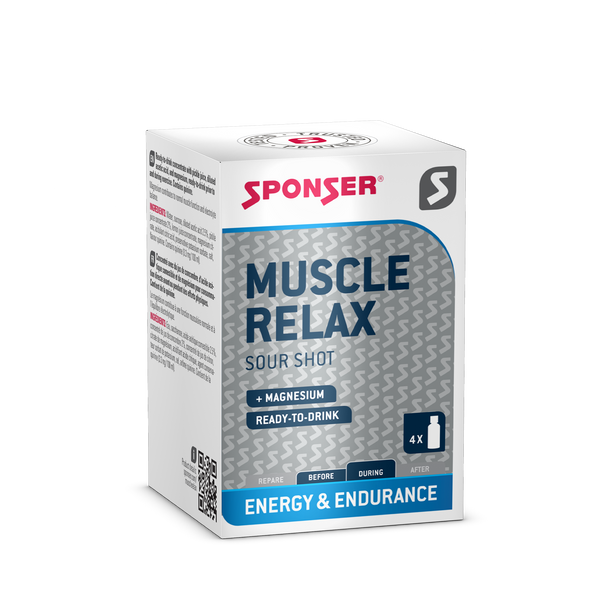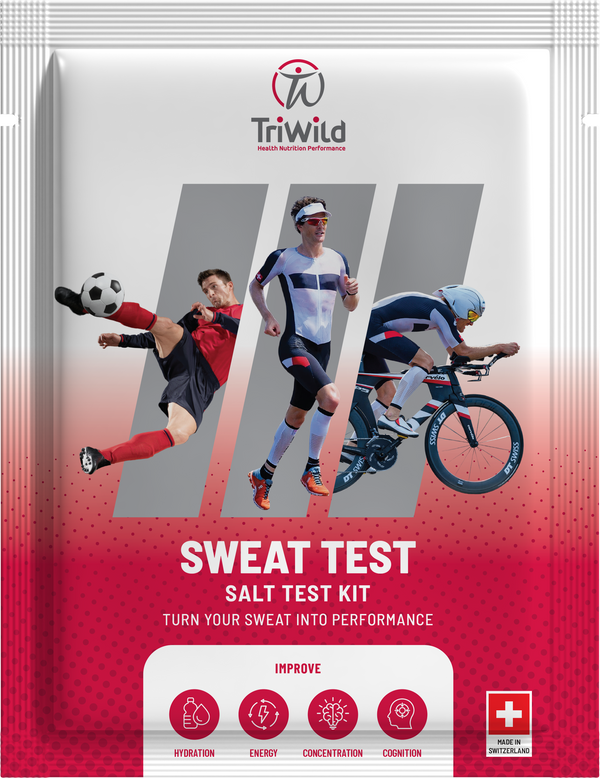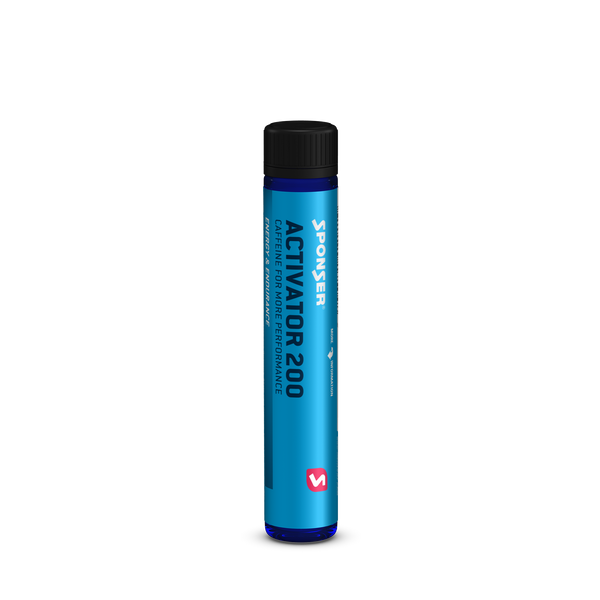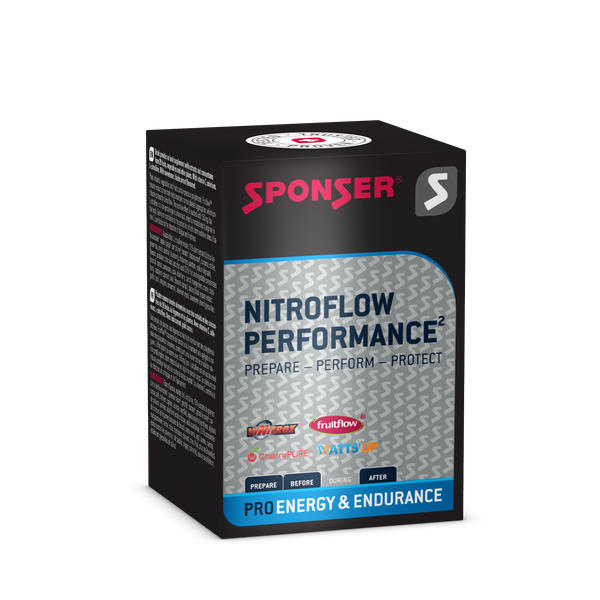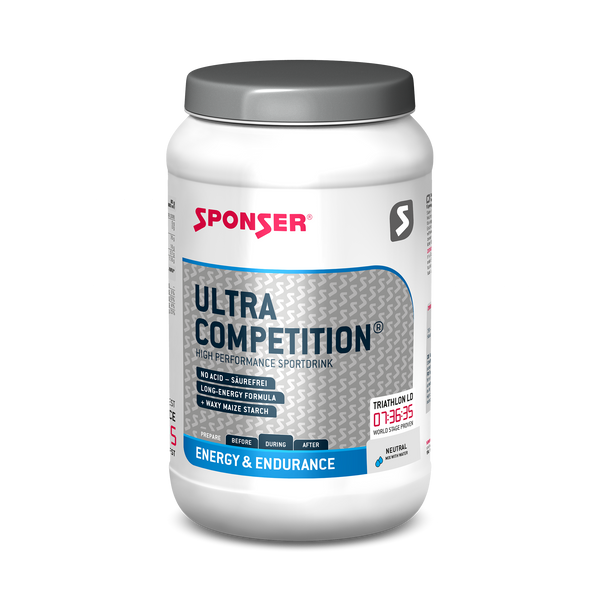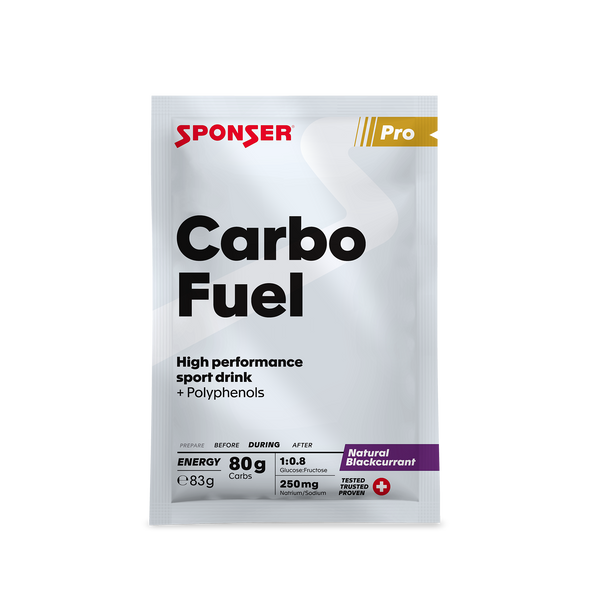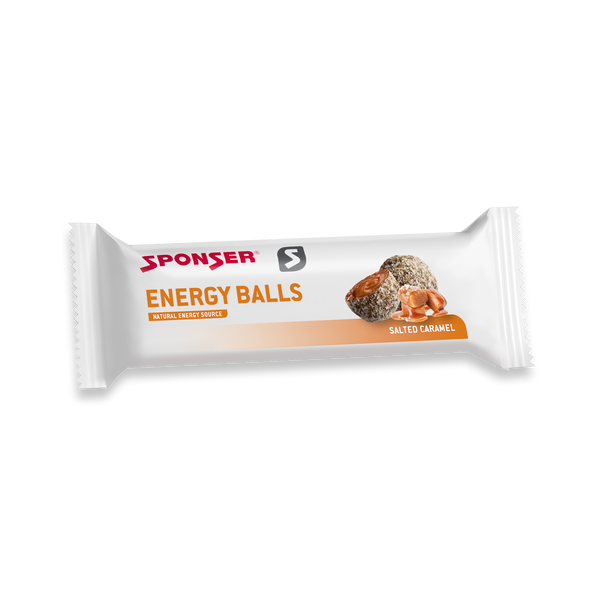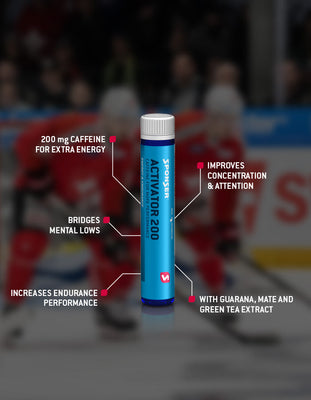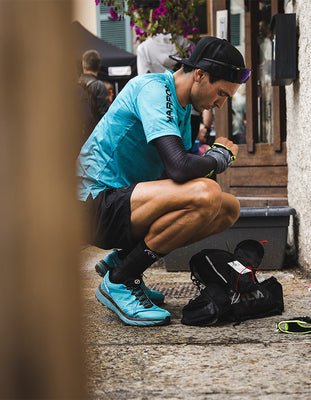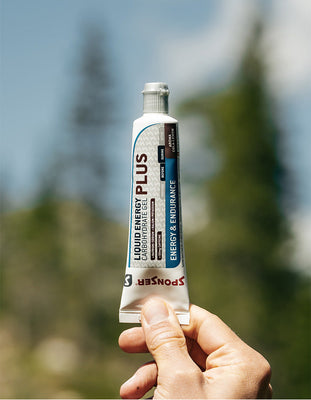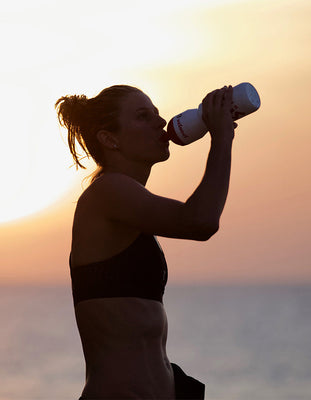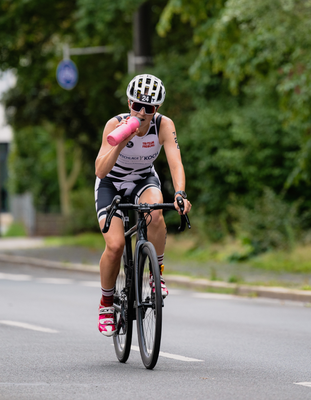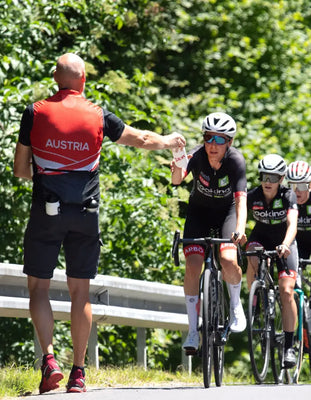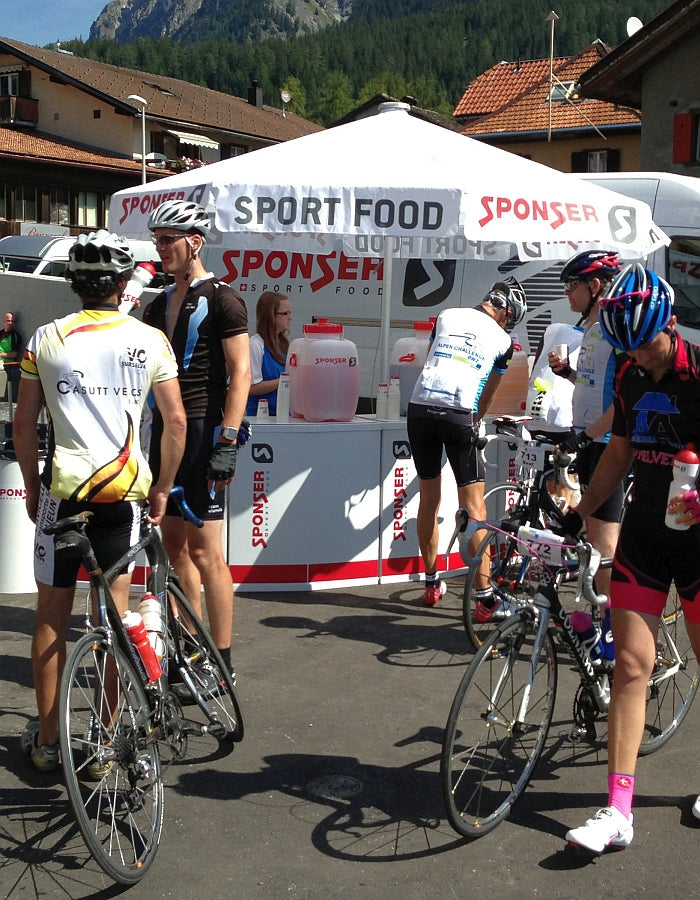
Nutrition tips for road cycling
The nutrition strategy before and during a road cycling race is basically a very individual matter, especially for longer distances. Nevertheless, there are important guidelines to follow in order to get through the competition optimally. Special attention should be paid to the following three parameters:
• Fluid balance: Drink regularly and according to your thirst.
• Energy: Use easily digestible carbohydrates as the main source of energy, approx. 60-100 g per hour. Sports drinks and energy gels are particularly practical during races.
• Electrolytes/salt balance: Preferably use sports drinks and additionally take electrolytes (salt capsules) if the race lasts more than three hours. Especially, if pure water is drunk and warm temperatures prevail.
» Our product guide road cycling illustrates what you need to pay attention to.
No experiments in competition!
Prior to use during competitions, we recommend testing all products in advance during training under competition-specific stress. Because even though optimal digestibility of the products is a central development component of SPONSER®, there are always individual and situational factors that have to be considered. Many an elite athlete has had to learn the hard way in this regard. Rule number one is therefore: No nutritional experiments on the day of competition or immediately before!
Before Competition
Activation of NO metabolism
Formerly a secret tip, the so-called nitric oxide activation has spread in recent years thanks to broad scientific support. In addition to professionals, this concept is also used today by numerous ambitious amateur athletes. The activation of the nitric oxide metabolism (NO) aims, among other things, at increased oxygen availability and improved blood flow. The most efficient products are NITROFLOW PERFORMANCE and RED BEET VINITROX.
Carboloading
The longer the competition, the more the body's limited carbohydrate reserves and absorption capacity become the performance-limiting criteria. As a rule, long distance cyclists therefore benefit from carboloading prior to a race. Efficient carboloading means filling the body's various carbohydrate stores to the maximum. Study results suggest that one to two days of carboloading before competition is the adequately efficient. However, large amounts of food on the eve of a competition often lead to an unpleasant feeling of fullness or even digestive problems, and are therefore not recommended.
Consequently, in addition to a generally carbohydrate-rich diet immediately before the competition, we recommend taking the specially developed CARBO LOADER on pre-race days. CARBO LOADER is a highly concentrated, carbohydrate-electrolyte drink without free fructose. Ideally, one portion should be taken after each main meal.
The advantages of such a carboloading are:
• Maximally filled glycogen stores.
• No feeling of fullness and less flatulence.
• Practical handling: CARBO LOADER, especially in a portion bag, can be easily taken at any location.
Electrolytes
The electrolytes balance should be maintained before the race start. A little extra salt during the last meals is a suitable measure in this respect. Ideally, you should take one or two salt capsules (SALT CAPS) or dissolve ELECTROLYTE TABS in a water bottle. If you want to take carbohydrates at the same time, take a sports drink (COMPETITION®).
During competition
Individual parameters
The longer the duration of the competition, the more important it is to keep individual parameters in balance in order to maintain optimal performance. The most important factors to keep in mind are: energy, fluid and electrolytes.
Energy
For almost all cyclists doing a long distance race, carbohydrates are the main source of energy in competition. However, their absorption capacity is physiologically limited. As a rule of thumb: Consume between 60-100 g carbohydrates per hour or approx. 1 g carbohydrates per kg of body weight.
If too much energy is ingested, digestive problems may occur. Flatulence or digestive problems, for example, are two such indicators. In principle, it does not matter whether the energy is ingested through sports drinks, gels, bars or the like. In addition to the competition route (topography), individual experiences and preferences play a decisive role here. We recommend a combination of the different sources. The longer the competition, the greater the need for solid food. In this respect, our HIGH ENERGY BARS have proven to be the most suitable. For ascents and with heavy breathing the energy is preferably taken via liquids. Intermittent energy shortage can optimally be countered with LIQUID ENERGY gels.
The choice of gels (LIQUID ENERGY PLUS, LIQUID ENERGY BCAA, LIQUID ENERGY PURE, or LIQUID ENERGY SALTY) is individual and can be varied at preference. The LIQUID ENERGY SALTY gel is a good change in heat - not least from a taste point of view. It contains more salt, tastes spicy-salty and less sweet. With increasing competition duration, high temperatures and a tendency to cramp, we recommend the use of SALT CAPS as an additional electrolyte source (approx. 1-2 caps per hour). Because every person loses a different amount of sweat and therefore has an individual electrolyte requirement, we recommend doing the SWEAT TEST for optimal performance and recovery. This simple self-test determines your individual electrolyte needs, allowing you to perfectly tailor your nutrition and drinks to your specific sweat profile.
Fluid and electrolytes
Not only fluid but also electrolytes are lost through sweat. Therefore, it is important to drink regularly right from the start and to pay attention to the feeling of thirst, which is the most reliable indicator according to scientific findings. For nutritional and physiological reasons, we recommend taking COMPETITION®, LONG ENERGY or ULTRA COMPETITION carbohydrate-electrolyte drinks. The advantage: These sports drinks provide the body with valuable electrolytes, fluids and, of course, the necessary energy in hypotonic form. The drinks are also acid-free, provide a broad carbohydrate spectrum and are only discreetly flavoured, which makes them optimally tolerated.
Performance Optimizer
To ignite one's supercharger in the second half of the competition, the use of ACTIVATOR is beneficial. The small 25 ml ready-to-drink shot with 200 mg of caffeine corresponds to about 2 to 3 cups of coffee. Caffeine activates and improves endurance performance, concentration and alertness. It also has a positive effect on motivation. As with all products, it is advisable to test ACTIVATOR for individual digestibility in the run-up to the competition.
If you tend to cramp with increasing competition duration or in general, you can use the MUSCLE RELAX shot as a remedy. The pickle juice-like, sour-sharp drinking solution activates neurosensory receptors and helps to normalise muscle function.
After competition
Fast regeneration pays off
The regeneration phase begins immediately after the finish line and is particularly decisive. The faster, the better for the body, even if there is usually no feeling of hunger at this point.
The following three factors are central to your rapid regeneration:
• Replenishment of glycogen stores through easily digestible carbohydrates.
• Rehydration with fluid and electrolytes.
• Restoration/repair of the muscles with protein.
Elite athletes consume a professional regeneration drink with a protein content of approx. 20 to 30 g within 30 minutes after passing the finish line in order to cover all important elements easily and efficiently. PRO RECOVERY, RECOVERY SHAKE or WHEY ISOLATE 94 are used most frequently. The RECOVERY DRINK (combined with a flask AMINO 12500) has also proven itself in practice thanks to its practical portion size.
Author: Yvonne Forster Nigg
dipl. eng. food sciences UAS
dipl. dietitian HS
